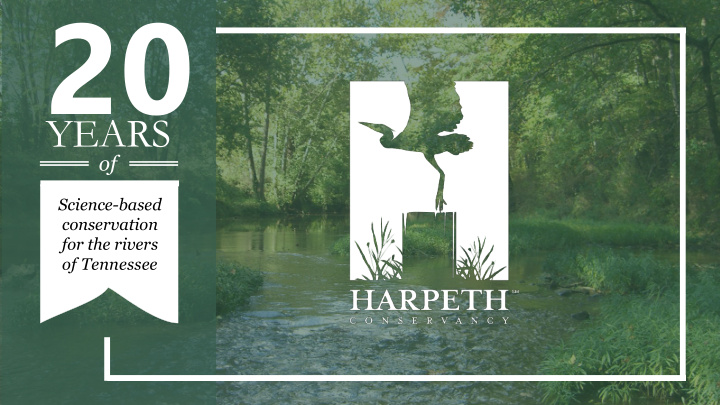



20 YEARS of Science-based conservation for the rivers of Tennessee
Harpeth Conservancy 2019 Algal Toxin Survey Introduction: • Previous survey (Harpeth Conservancy and Austin Peay) identified cyanobacteria in Harpeth River • Goal: Survey for microcystin to determine if algal toxin (produced by cyanobacteria) is in the Harpeth River watershed Materials and Methods: Sampling Water samples (n = 18) were collected between September 14 th and October 2 nd , 2019 at various locations within the Harpeth watershed (Table 1). Both Harpeth River mainstem and tributaries were represented within the sampling locations. Locations were selected based on ease-of-access and whether algae was present regardless of it being within the water column or as a benthic scum. Locations with more visible algal growth were given priority as cyanotoxin would be more likely to be present and/or detected. Water samples were collected in sterile glass and plastic bottles of various size. Each bottle was rinsed with native water three times before a final sample of >250 mL was collected. Samples went through three freeze-thaw cycles before being stored in a -20°C freezer. Analysis Frozen samples were transported in a cooler to the Environmental Sciences Department at Tennessee State University for analysis. Each sample was analyzed for microcystins/nodularins (µg/L; EPA Method 546) using an Abraxis, Inc (Warminster, PA) ELISA kit (Item #: 520011-OH).
Figure 1-A : Trace Creek upstream of sampling location.
Figure 1-B : Unnamed tributary near Bailey Rd.
Figure 1-B: Harpeth River behind Ingram property.
Jennifer L. Graham, Neil M. Dubrovsky, Guy M. Foster, Lindsey R. King, Keith A. Loftin, Barry H. Rosen & Erin A. Stelzer (2020) Cyanotoxin occurrence in large rivers of the United States, Inland Waters, DOI: 10.1080/20442041.2019.1700749
Recommend
More recommend